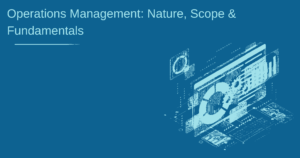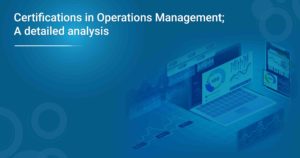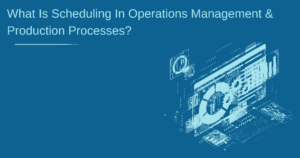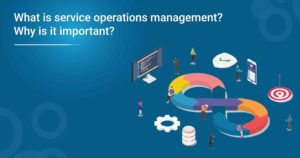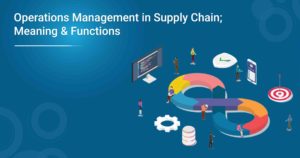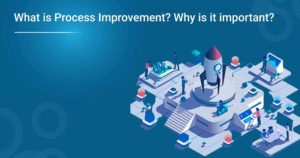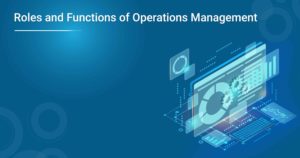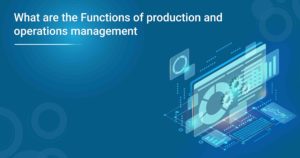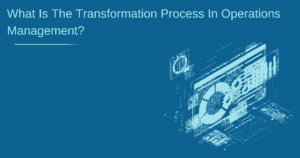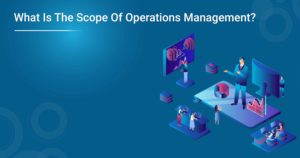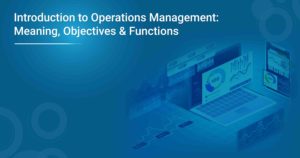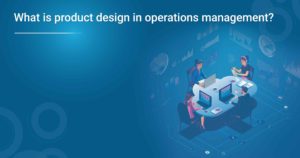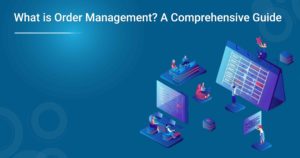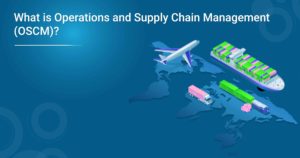In the business world, process design is a critical element of success. In order to create efficient and profitable operations, it is necessary to have a process in place that can be followed consistently. Operations management is all about ensuring that the process runs smoothly and that goals are met. Let’s discuss what process design is and how it applies to operations management.
Understanding Process Design: An Overview
Process design is at the heart of operations management (OM). It is the process of creating and improving systems that convert inputs into outputs. Process design involves understanding how work is done within an organisation and then designing and implementing ways to improve it.
There are several types of process designs, but all share some standard features. Process designs must take into account the resources required to complete the process, the desired output of the process, and any constraints on the process. In addition, process designs must be flexible enough to accommodate changes in inputs or outputs.
The objective of process design is to create a system that is efficient and effective. Efficiency means that the process uses as few resources as possible to produce the desired output. Effectiveness means that the process produces the desired output.
Significance In Operations Management
Operations management is a process of designing, executing, and monitoring the systems that create and deliver goods and services. Simply put, it is the management of resources and processes necessary to produce goods and services. It is fundamental to operations management because it involves creating and improving production processes.
It is essential for several reasons. First, an effective process design can improve production efficiency and help reduce costs. Second, a well-designed process can enhance the quality of the final product or service. Finally, an efficient approach can help to reduce lead times and increase customer satisfaction.
What Is Process Design Planning?
Process design planning is the process of creating a plan for the production process. The process designer must consider many factors when creating the plan, such as the product type, the materials needed, the equipment available, and the workforce. The goal of process design planning is to create a process that is efficient and effective in producing the desired product.

Determining The Requirement: The first step is to assess the requirement of process design. The process designer must clearly understand the product that needs to be produced, the materials required, the equipment available, and the workforce.
Creating The Plan: Once the requirements are determined, the process designer can create a plan for the production process. The plan must be completed in a way that is efficient and effective in producing the desired product.
Building Team: The process designer must build a team of experts who can help with the implementation of the process design. The team should be able to provide input and feedback on the process design.
Implementing The Plan: Once the process design is complete, the process designer must implement the plan. This includes setting up the production process, testing the process, and making any necessary adjustments.
Monitoring The Process: The process designer must monitor the process to ensure that it is running smoothly and effectively. The process designer should make changes to the process as needed to improve its efficiency and effectiveness.
Audit: Audit is a crucial process in process design. The process designer must audit the process to ensure that it meets the requirements and is running effectively. The audit should be conducted regularly to ensure that the process is running smoothly.
What Are The Objectives Of Process Design?
The process design objectives are to develop a process that will produce a product or service that meets the customer’s requirements. The process must produce the product or service at the required rate and quality and at an affordable cost. In addition, the process must be safe, reliable, and easy to operate and maintain.

- Prioritise Better Outcomes
It is essential to normalise the process and design around the customer. This means that instead of designing the process and then testing to see if the customer is satisfied, the process should be designed with the customer in mind from the outset. It will help ensure that the operation can meet their needs and expectations.
One way of doing this is to map out the process from start to finish, taking into account all the different steps involved. This will identify areas where the process could be improved and will also allow you to see where there may be potential bottlenecks.
- Improve efficiency
Another essential objective of process design is to improve the efficiency of the process. This can be done by reducing the amount of time that is required to complete each task or by reducing the number of resources that are needed.
The process should be designed in such a way that it is easy to operate and maintain. This will minimise the time required to train new staff and will also help to reduce the number of errors that are made.
Finally, the process should be designed to be as flexible as possible. This will allow it to be easily adapted to meet the changing needs of the customer.
- Dodge The Disorder
One of the main objectives of process design is to avoid disorder which can be achieved by ensuring that the process is well organised and clearly defined.
It is also essential to ensure the process is simple and easy to understand. This will help to prevent errors from being made and will also make it easier to train new staff.
In addition, the process should be designed to be as robust as possible. This will help to ensure that it can withstand the rigours of production and will also help to prevent it from breaking down.
- Ensure Accountability
Another essential objective of process design is to ensure accountability. This means that each step in the process should be clearly defined and that there should be a transparent chain of responsibility.
This will help to ensure that each stage in the process is carried out correctly and will also help to prevent mistakes from being made.
In addition, this will help to ensure that each stage in the process is adequately monitored to ensure problems are dealt with early.
- Simplify Collaboration
Collaboration is when people work together to accomplish some common goals. The process of process design should be such that it facilitates cooperation and collaboration among the different stakeholders.
This will help to ensure that the process can meet the needs of all the different parties involved and will also help to prevent misunderstandings from occurring. In addition, this will help ensure that the process can run smoothly and that any problems that arise are quickly dealt with.
Challenges Involved

Just like any other process, it involves several challenges. A few of these challenges are listed below:
- Uncertainty: Many process designs are put together without a clear understanding of the product, process, or customer.
- In complexity: The process design may be too complex for the resources available.
- Inexperience: The process designer may not have enough experience in process design.
- Lack of tools: The process designer may not have access to the right tools or resources.
- Time constraints: The process design may be constrained by time, budget, or other resources.
Despite these challenges, process design is a critical part of operations management. A well-designed process can improve efficiency, quality, and customer satisfaction. A poorly designed process can lead to waste, defects, and customer dissatisfaction.
Things To Consider
An organisation’s process design is essential to its operations management’s success. For this, it is imperative to consider the following:
- It should be able to accommodate the current and future needs of the organisation: This means that the process must be designed to be flexible enough to handle changing demand, technology, etc.
- It should be flexible and scalable: The process should be designed so that it can be easily scaled according to the organisation’s needs.
- It should be cost-effective: The process must be designed considering the costs involved in its implementation and operation. There should be a balance between the process’s costs and benefits.
- It should be efficient and effective: It is essential to design an efficient and effective process. An efficient process uses the minimum resources to produce the desired result. An effective process produces the desired output.
- It should be safe and reliable: The process must be designed keeping in mind the safety of the employees and the reliability of the process. The process should be such that it minimises the chances of errors and accidents.
- It should be easy to use and understand: Easy comprehension is the most critical aspect of any process design. The process must be designed in such a way that it is easy to understand and use. Without any ambiguity in the process, the employees should quickly follow the process.
Thus, these are some of the things to consider while designing a process. It is essential to consider factors to ensure the success of the process and the organisation.
Consequences of Poor Process Design
Several consequences can result from poor process design. It can lead to inefficiency, waste, and errors. It can also lead to disgruntled employees and customers. In the worst case, it can even lead to safety issues.
There are ways to avoid these consequences. By taking the time to design your process correctly, you can ensure that it runs smoothly and efficiently. It will save money and time in the long run and will keep your employees and customers happy.
Conclusion
In conclusion, process design is a vital part of operations management. It helps organisations to determine the most efficient way to produce goods or services. Through improvements in process design, businesses can optimise their production process and reduce costs. Additionally, it can help companies to improve quality control and increase customer satisfaction. Process design is, therefore, an essential tool for any organisation that wants to improve its operations.
It is imperative to involve all the important stakeholders in the design process, as they will each have valuable insights to contribute. The process should be designed with the end goal, and all steps should be carefully mapped out before implementation. By following all these best practices, your organisation can reap the many benefits of process design.
In the end, it is the duty of the operations manager to see that the process design is executed correctly and effectively. They must also ensure that the process meets the organisation’s and its customers’ needs. By doing so, they can help to improve the overall efficiency of the organisation and create a competitive advantage.







